 https://www.circleofblue.org/wp-content/uploads/2024/08/HKH.jpg
1600
2036
Zara Gounden
https://www.circleofblue.org/wp-content/uploads/2018/06/Circle-of-Blue-Water-Speaks-600x139.png
Zara Gounden2024-08-02 06:51:132024-08-02 13:01:36Snowfall in Hindu Kush Himalaya In Steep Decline
https://www.circleofblue.org/wp-content/uploads/2024/08/HKH.jpg
1600
2036
Zara Gounden
https://www.circleofblue.org/wp-content/uploads/2018/06/Circle-of-Blue-Water-Speaks-600x139.png
Zara Gounden2024-08-02 06:51:132024-08-02 13:01:36Snowfall in Hindu Kush Himalaya In Steep DeclineIn an era when more risks are becoming profound realities, HotSpots H2O helps make sense of a changing, often stressed global waterscape.
 https://www.circleofblue.org/wp-content/uploads/2024/08/HKH.jpg
1600
2036
Zara Gounden
https://www.circleofblue.org/wp-content/uploads/2018/06/Circle-of-Blue-Water-Speaks-600x139.png
Zara Gounden2024-08-02 06:51:132024-08-02 13:01:36Snowfall in Hindu Kush Himalaya In Steep Decline
https://www.circleofblue.org/wp-content/uploads/2024/08/HKH.jpg
1600
2036
Zara Gounden
https://www.circleofblue.org/wp-content/uploads/2018/06/Circle-of-Blue-Water-Speaks-600x139.png
Zara Gounden2024-08-02 06:51:132024-08-02 13:01:36Snowfall in Hindu Kush Himalaya In Steep Decline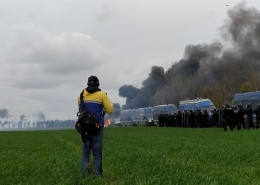 https://www.circleofblue.org/wp-content/uploads/2023/06/Saint-soline-image.jpeg
1200
1600
Fraser Byers
https://www.circleofblue.org/wp-content/uploads/2018/06/Circle-of-Blue-Water-Speaks-600x139.png
Fraser Byers2023-06-21 10:46:532023-12-05 21:54:13HOTSPOTS H2O: UN Condemns Violence Against French Water Defenders
https://www.circleofblue.org/wp-content/uploads/2023/06/Saint-soline-image.jpeg
1200
1600
Fraser Byers
https://www.circleofblue.org/wp-content/uploads/2018/06/Circle-of-Blue-Water-Speaks-600x139.png
Fraser Byers2023-06-21 10:46:532023-12-05 21:54:13HOTSPOTS H2O: UN Condemns Violence Against French Water Defenders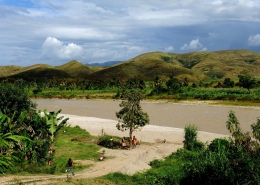 https://www.circleofblue.org/wp-content/uploads/2023/06/River-Artibonie.jpeg
1022
1536
Fraser Byers
https://www.circleofblue.org/wp-content/uploads/2018/06/Circle-of-Blue-Water-Speaks-600x139.png
Fraser Byers2023-06-14 12:44:212023-12-06 09:37:02HOTSPOTS H2O: Citing Dire Risk to Water and Communities, Groups Oppose Newmont’s Gold Mine in Haiti
https://www.circleofblue.org/wp-content/uploads/2023/06/River-Artibonie.jpeg
1022
1536
Fraser Byers
https://www.circleofblue.org/wp-content/uploads/2018/06/Circle-of-Blue-Water-Speaks-600x139.png
Fraser Byers2023-06-14 12:44:212023-12-06 09:37:02HOTSPOTS H2O: Citing Dire Risk to Water and Communities, Groups Oppose Newmont’s Gold Mine in Haiti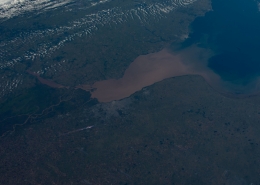 https://www.circleofblue.org/wp-content/uploads/2023/06/52064549919_783e986f94_k.jpg
1066
1600
Circle Blue
https://www.circleofblue.org/wp-content/uploads/2018/06/Circle-of-Blue-Water-Speaks-600x139.png
Circle Blue2023-06-07 09:27:142023-12-05 21:54:33HOTSPOTS H2O: Day Zero Threatens Uruguay’s Capital
https://www.circleofblue.org/wp-content/uploads/2023/06/52064549919_783e986f94_k.jpg
1066
1600
Circle Blue
https://www.circleofblue.org/wp-content/uploads/2018/06/Circle-of-Blue-Water-Speaks-600x139.png
Circle Blue2023-06-07 09:27:142023-12-05 21:54:33HOTSPOTS H2O: Day Zero Threatens Uruguay’s Capital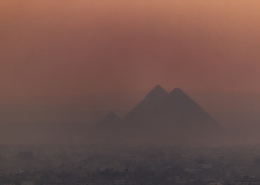
HotSpots H2O: Trouble Areas Emerge as Summer Looms
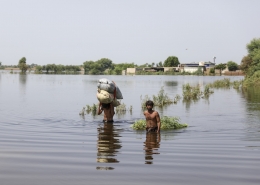
HotSpots H2O: As Floods Subside, Pakistan’s Economy Is on a Knife-Edge
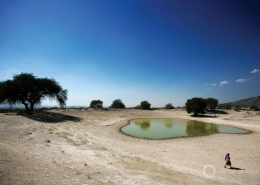
HotSpots H2O: In Northern Mexico, Harsh Drought Compounds Water Inequality
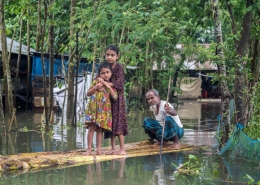
HotSpots H2O: What’s Driving Vulnerability Behind South Asia’s “Biblical” Floods?
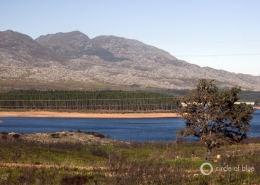
HotSpots H2O: “Day Zero” Looms for South African Province
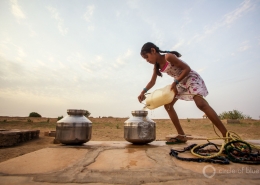
HotSpots H2O: As Water Systems Fail in Pakistan, Heat Wave Begets A Health Crisis
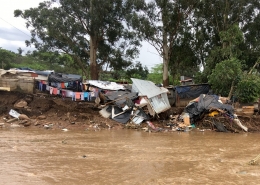
HotSpots H2O: ‘We Have Nowhere Left To Go’: Durban’s Affordability Crisis Pushed Development into Flood Zones
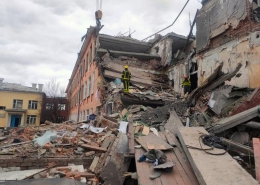
HotSpots H2O: In Besieged Ukraine, Water Again a Locus of Conflict
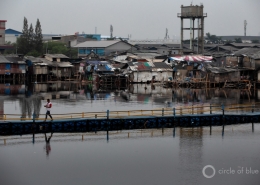
HotSpots H2O: Polluted Rivers, Scarce Water, Sinking Capital: Report Warns of Dire Water Threats Facing Indonesia
Snowfall in Hindu Kush Himalaya In Steep Decline
/in HotSpots H2O, Water News/by Zara Gounden Image by the MODIS Rapid Response team.
Image by the MODIS Rapid Response team.
Zara Gounden, Circle of Blue – August 2
In response to critically low snow cover in the Hindu Kush Himalaya region, and the potential for serious water shortages in downstream communities, experts from the International Centre for Integrated Mountain Development (ICIMOD) have called for immediate action in their annual Snow Update Report.
“We encourage relevant agencies to take proactive measures to address possible drought situations, update plans to accommodate water stress, and to notify communities of the risks,” said Miriam Jackson, ICIMOD’s senior specialist, in a statement. “Beyond that, it’s clear that governments and people in this region need urgent support to help them adapt to changes in snow patterns that carbon emissions have already locked in. G20 countries need to cut emissions faster than ever before to prevent even more changes that will prove disastrous to major population centers and industries that rely on snow-melt in the mountains.”
The towering snow peaks of the Hindu Kush span approximately 4.2 million square kilometers and 800 kilometers across Afghanistan, northern Pakistan, and Tajikistan. The region’s normally heavy snowfall and lingering snow cover serve as a critical water source for several major rivers.
The report, published on June 14, 2024, highlights that snowmelt accounts for about 23 percent of the total water flow in 12 major river basins originating in the Hindu Kush Karakoram Himalayas region. This snowmelt contributes 74 percent of the river flow to the Amu Darya, 77 percent to the Helmand, and 40 percent to the Indus.
The report indicates that snow levels are about 20 percent below average across the region this year, with especially steep declines in the west, where snow plays the most significant role in the water supply.
Lower snow accumulation and fluctuating snow levels significantly increase the risk of water shortages, especially this year. Experts from ICIMOD are urging water management officials to implement drought management strategies and prepare emergency water supplies in advance.
The effects of declining snow are being experienced worldwide. Snow cover on glaciers increases their reflectivity, which reduces heat absorption and prevents melting. It also acts as insulation, protecting glacier ice from direct solar radiation and warm air. This in turn can lead to devastating consequences such as rising sea levels, and disrupted water supplies for millions of people.
Other major ice formations are experiencing similar decline, illustrating the profound consequence of climate change on the planet’s great ice fields and water sources. The Quelccaya Ice Cap in Peru, the world’s largest tropic ice cap, has significantly receded, shrinking from 58 square kilometers in 1988 to just over 40 square kilometers in 2023.
Zara is a reporting intern at Circle of Blue. She is a Davis Scholar in her third year at New York University London, majoring in Global Liberal Studies with a concentration in Politics, Rights, and Development.

Subscribe
Previous HotSpots H2O
 Snowfall in Hindu Kush Himalaya In Steep DeclineAugust 2, 2024 - 6:51 am
Snowfall in Hindu Kush Himalaya In Steep DeclineAugust 2, 2024 - 6:51 am Climate Change Drains Reservoirs in the U.S. July 23, 2024 - 11:57 am
Climate Change Drains Reservoirs in the U.S. July 23, 2024 - 11:57 am Hurricane Beryl: A Sign of Increasingly Severe StormsJuly 22, 2024 - 10:32 am
Hurricane Beryl: A Sign of Increasingly Severe StormsJuly 22, 2024 - 10:32 am The New Normal: Northern India Faces Record-Breaking Hot SummersJune 24, 2024 - 10:54 am
The New Normal: Northern India Faces Record-Breaking Hot SummersJune 24, 2024 - 10:54 am Closing the Gap: Afghanistan’s Hunger Crisis in the SpotlightApril 30, 2024 - 12:57 pm
Closing the Gap: Afghanistan’s Hunger Crisis in the SpotlightApril 30, 2024 - 12:57 pm
© 2023 Circle of Blue – all rights reserved
Terms of Service | Privacy Policy



